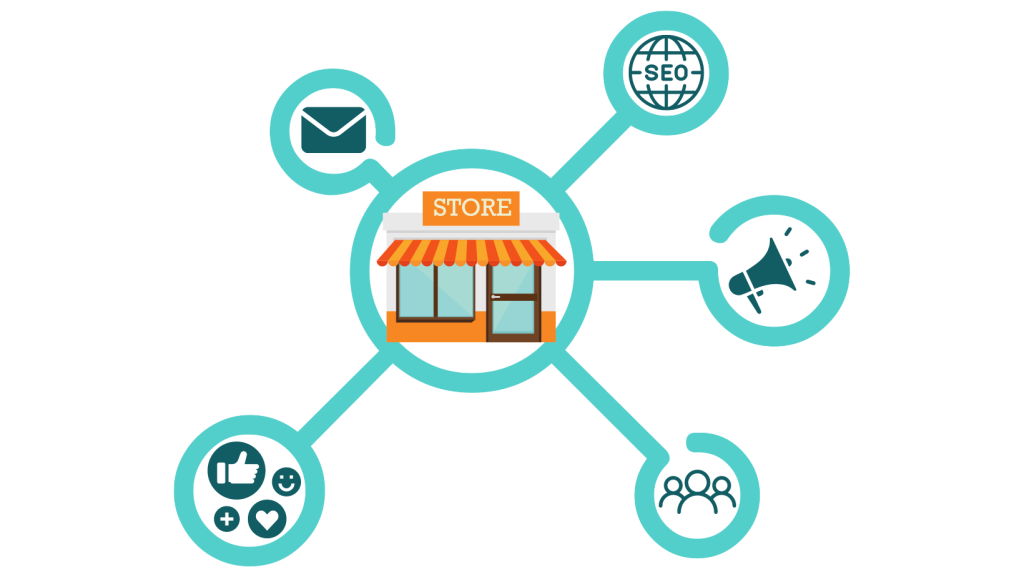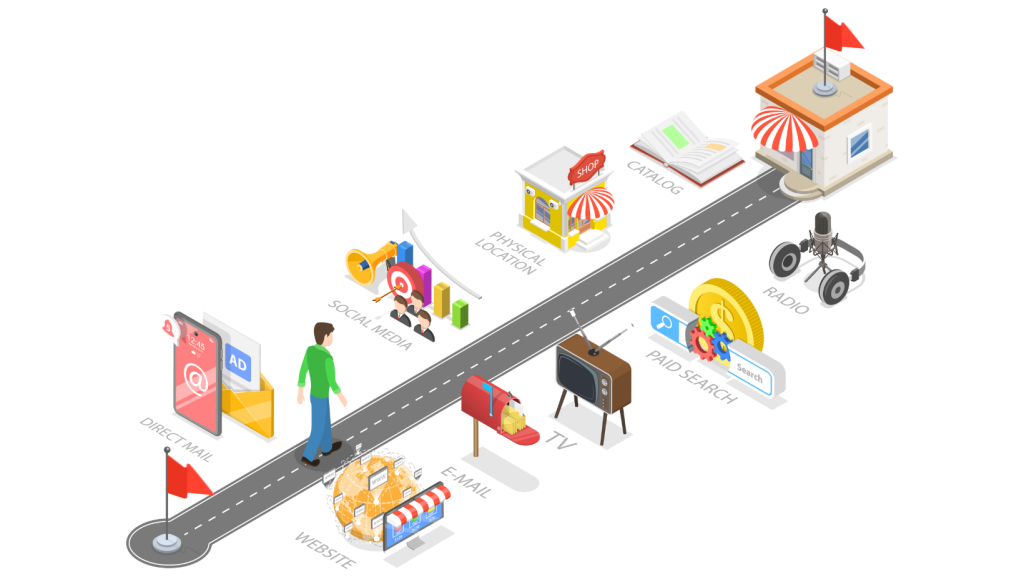
Unlocking Success: Setting the Foundation of Your Digital Strategy
In the rapidly evolving world of e-commerce, digital strategies hold the key to unlocking success with limitless opportunities. As customers lean on digital platforms for their shopping needs businesses must continuously adapt and innovate to stay relevant and on top of trends. Digital strategies can include a wide range of goals from optimizing your website for maximum conversions to utilizing social media marketing.
All businesses, whether you're looking to launch a new online store or optimize your existing one, should have a basic understanding of where to start with their e-commerce digital strategies that drive traffic, engage customers, and ultimately, increase revenue. This blog is your first step to understanding how to do just that. Join us as we dive into the foundation blocks for building your digital strategy.
Developing a Digital Strategy
Creating your digital strategy involves developing a structured approach that begins with you understanding your target audience, current competitors, and your buyer’s journey. (See our past blog here for an introduction to the Buyer’s Journey). By understanding these elements, businesses can identify opportunities, pinpoint customer pain points, and tailor their strategies to meet the needs and preferences of their customer. Businesses can then develop an in-depth plan that outlines specific tactics, channels, and resources required to achieve their goals.
Digital Main Street offers a free Digital Assessment for those looking to start outlining their digital strategies and discover missing elements they can implement to improve their digital readiness. Each level of the assessment includes recommended activities targeted to your business. These recommendations include an explanation and helpful resources for you to accomplish your digital goals. To begin your Digital Assessment, join us here: https://digitalmainstreet.ca/business-account/registration/
Connecting Digital Hubs & Sales Channels
A digital hub, also known as your e-commerce store, serves as a home base for your business online. Customers can learn about your business, and browse, select, and purchase goods or services from the comfort of their own devices. You can also share crucial information on your e-commerce site, like shipping policies, terms and services, how orders are fulfilled, and more. Your digital hub also enables you, the business owner, to fulfill these online transactions and provide customers with updates on their orders. With your own e-commerce hub, you can control how, where, and what customers can see and engage with!
For customers to get to the end of their buyer's journey (aka complete a purchase), businesses need to create routes for customers to follow. This is where your connected sales channels and digital touchpoints come into play. Digital sales channels are online platforms where businesses reach, engage, and interact with customers. These channels typically include social media platforms, Google shopping, email marketing, and more. Each channel has the ability for businesses to connect with their customers, drive traffic to their digital hubs, and generate sales.
Connecting sales channels with your digital hub is one of the best ways to help customers along their buyer's journey, and to expand your online presence to reach a wider audience. By integrating sales channels into your digital hub/online store, you can create a seamless omnichannel experience for your customers, allowing them to engage with you across multiple digital touchpoints. This omnichannel solution not only helps customers travel to your digital hub, but also improves brand visibility, strengthens customer loyalty, and drives sales. Additionally, connecting sales channels with digital hubs enables businesses to gather valuable data and insights into customer behaviour, preferences, and purchasing patterns, which can support your digital marketing plans and sales strategies. Overall, creating a network of connected sales channels to your digital hub supports your business in adapting to the evolving digital landscape and helps you thrive in the competitive world of e-commerce.
To put this into perspective, imagine you are hosting a yard sale. To advertise the yard sale you would put up flyers all over your neighbourhood with the yard sale details like the address, date, time, etc. On the day of the yard sale, you would also put directional signs on street corners to help guide people to the sale. People who want to come to your yard sale would then see the flyers and signs you put up directing them to your yard sale, and you would have a great turn out!
Now imagine you had a yard sale with no flyers. Or flyers with no address. Or direction arrows with no information on where they lead to. Chances are no one would come to your yard sale.
The same thing happens online, but with the comfort of selling goods at any time, anywhere, on any device – and without all the strangers in your yard! Your yard sale represents your online store. The flyers you put up in the neighbourhood represent the different sales channels (social media posts, email newsletters, etc) that guide people to your online store. The arrows you put on the street corners would be your calls-to-action on your ads, such as “Click Here!” or “Visit our website!” directing people to your address. Having these connected sales channels working together, customers can easily find their way to your store.

Digital Touchpoints Along the Customer Journey
The customer journey begins with an initial touchpoint where potential customers encounter your business through various digital sales channels such as social media, search engines, or email marketing campaigns. These channels serve as the starting point on the route to your online store, grabbing the attention of potential customers with compelling content, personalized recommendations, and exciting offers.
Once a customer takes the next step and reaches your online store, the design and navigation of the website play a big part in guiding them along their journey to you eventually making a purchase The layout on your website must be visually appealing and provide a user-friendly experience including having easy to find navigation menus and clear calls-to-action. You want to make it easy for customers to find what they're looking for and to check out. Features like search functionality, product filters, and personalized recommendations also support their journey, helping customers discover relevant products and make informed purchasing decisions.
Designing a path to your overall goal of making a sale or booking a service requires mapping out the customer journey from start to finish and identifying the digital touchpoints and interactions your customer will have along the way. If you're noticing drop-off points along the customer journey, you’ll want to look at that digital touch point and make changes. Optimizing landing pages, redeveloping your marketing campaigns, or leveraging data and analytics to re-map your customer’s experience can help create successful customer journeys. By always looking into each stage of the customer journey and the touchpoints that go along with it, you can continuously optimize your strategy to drive results and deliver value to both your customers and your business.

Goals to Execution
Deciding on your business’s digital goals is a critical first step in crafting a successful e-commerce digital strategy. By setting measurable goals, businesses can track their progress, evaluate the effectiveness of their strategies, and adjust or optimize accordingly. Defining your digital goals, like increasing website traffic, boosting conversion rates, expanding your customer base, or increasing brand awareness, can show you where you need to focus your digital strategy. Ultimately, these goals should feed your business goal and support customers along their buyers' journey.
Goal Creation ExampleHere's how to establish goals tailored to each stage of the buyer’s journey:
By having goals in each stage of the buyer's journey, you can create a digital strategy that guides customers straight through the sales funnel providing growth for your business. Once you have established your goals it’s easier for you to identify how and what digital marketing tools and tactics you need to achieve them. |
Conclusion
In every business, your online presence acts as a map leading your customers from an initial touch point to purchasing a product or booking a service from your online store. Customers on your map may take different routes and engage with different digital touchpoints, or starting points, so it is essential to create a strong digital strategy that supports customers along their buyers' journey no matter what digital touchpoint they engage with. By having these interlocking connections between channels and your digital hub, your customers are easily able to navigate this journey without getting lost along the way. From there, once you have your buyer’s journey and a digital strategy in place, you can monitor your plan, optimize any drop-off points, and repeat!
To learn more about digital transformation and e-commerce, check out our virtual events tailored for small businesses.
